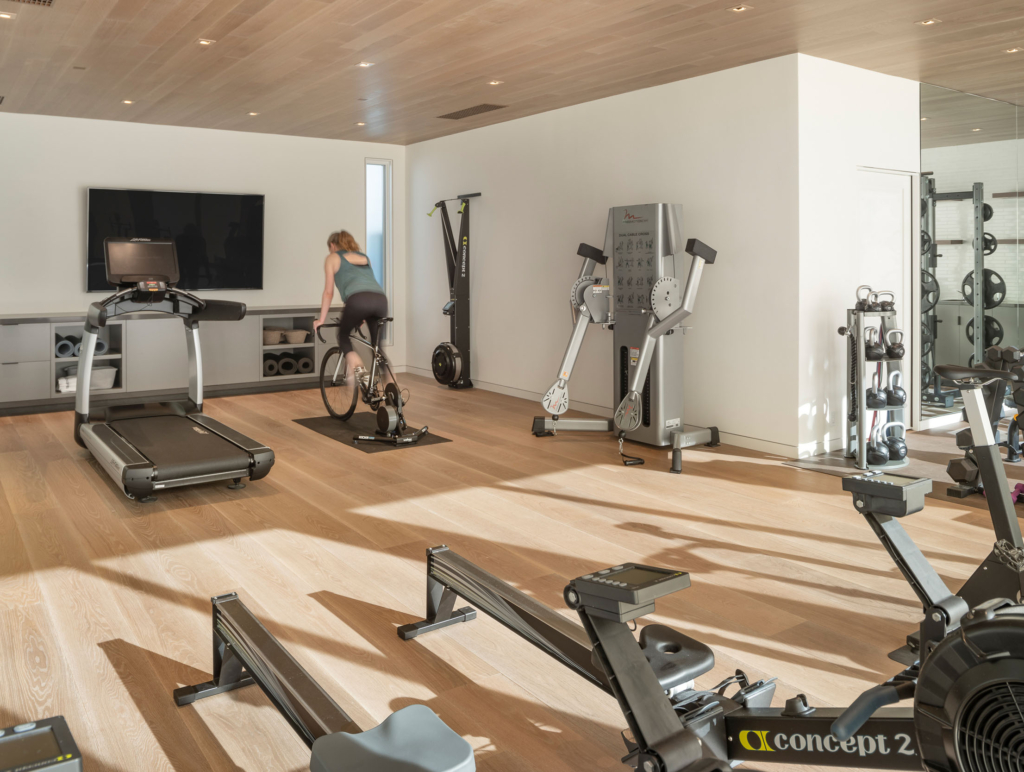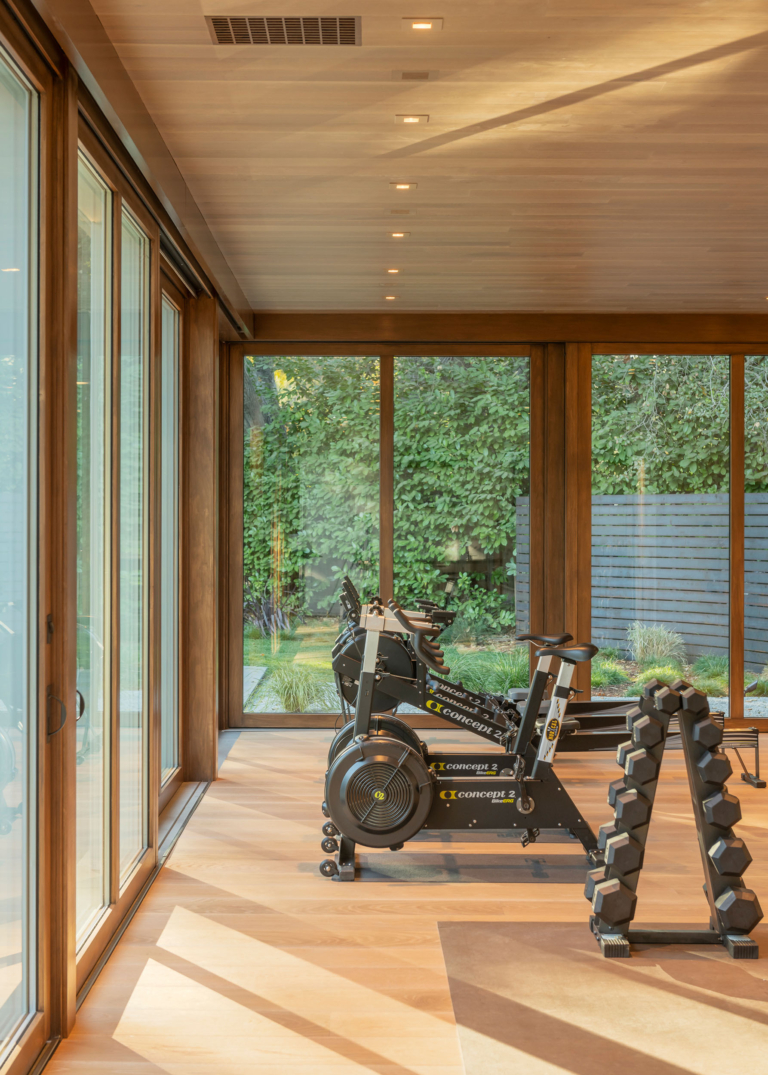Kristin Riccio Interior Design asked Jim Westover, Principal and Residential Practice Leader at William Duff Architects, to weigh in on home gym design tips for creating the perfect workout space.
This is a summary of an article by Kristin Riccio.
‘When the pandemic lockdowns forced gym and wellness studios to close their doors, the home gym has once again became a much-coveted feature of modern living. While people have resorted to at-home workout regimens, we saw the undeniable benefits of owning a well-designed home gym – flexibility in workout schedule, no commute, privacy, less distraction, less germs (!), and most importantly- personal customization. With home gyms increasing in popularity, designing for wellness has become more of a focus for designers and architects.
There’s no doubt a thoughtfully designed home gym can foster increased productivity, balance, health, and pleasure. Jim Westover, partner-principal at William Duff Architects, shares some valuable home gym design tips on how to create a functional and inspiring space.

How does architecture influence a home gym experience?
“Some home gyms end up being the leftover space in the basement. But with some good planning and creativity, the home gym can have a nice layout, good lighting, a flat screen TV, music and plenty of windows for natural ventilation, light and views. All those things make it a nice space to be in, which means you’ll use the gym more and be healthier.”
What elements and amenities can you introduce to create an environment that doesn’t feel utilitarian?
“If it’s going to be a space that people want to spend time in, it needs to have nice warm materials that can also hold up well in a gym environment. The most recent home gym we completed had a wood floor with mats under the heavy gym equipment. There was also a nice spa-like restroom with a steam shower and a little kitchenette with water, towels and snacks.”’
Read more tips here.
